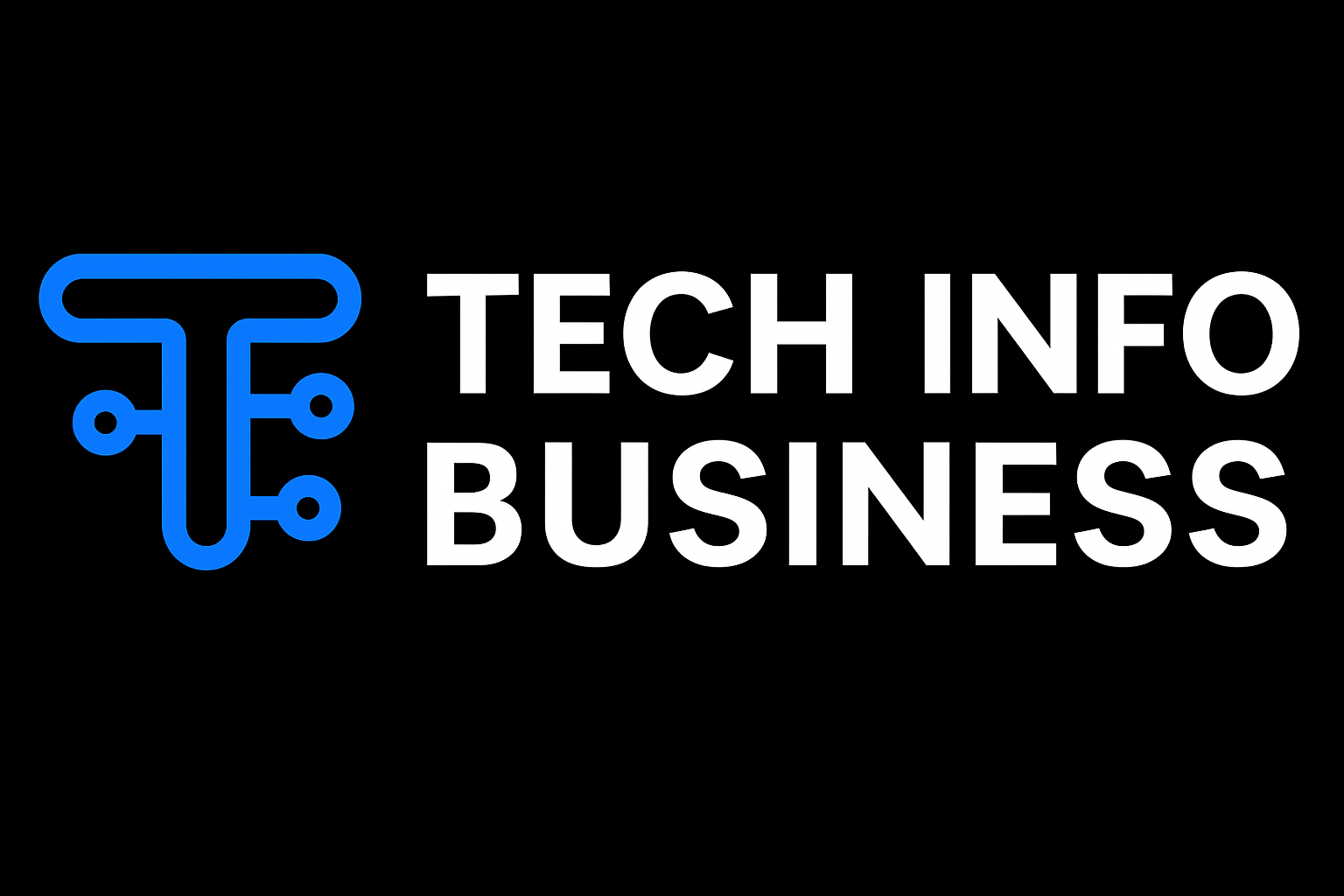Education and technology have become inseparable in today’s rapidly evolving world. As we move into 2025, the education business is undergoing a digital transformation like never before. Innovative technologies such as artificial intelligence (AI), virtual reality (VR), blockchain, and data analytics are revolutionizing how educators teach, how students learn, and how organizations train their workforce.
The top tech trends in the education business reflect a future where learning is more personalized, interactive, data-driven, and globally accessible. Let’s explore the major innovations shaping this transformation and how they are redefining the future of education.
1.Artificial Intelligence Leads Personalized Learning
AI is revolutionizing education by offering personalized and adaptive learning experiences. It analyzes student behavior and performance to tailor lessons to individual needs through tools like Squirrel AI, Microsoft Reading Coach, and ChatGPT-based tutors. Beyond teaching, AI automates administrative work such as grading and scheduling, freeing educators to focus on instruction. With over 60% of educators already using AI tools, its role in enhancing engagement, retention, and learning outcomes continues to expand rapidly across the education business.
2.Immersive Learning with AR, VR, and MR
Immersive technologies such as augmented reality (AR), virtual reality (VR), and mixed reality (MR) are transforming how students learn by creating hands-on, interactive experiences. These tools let learners explore realistic simulations — from historical sites to medical environments — improving understanding and retention. With costs dropping and accessibility improving, spending on immersive tech in education is set to soar. These tools make learning more engaging, emotional, and effective across schools, universities, and corporate training.
3.Gamification Makes Learning Fun and Competitive

Gamification turns education into a game-like experience using elements like points, badges, leaderboards, and challenges. This approach increases motivation, engagement, and knowledge retention. Studies show that students perform significantly better when learning involves competition and rewards. As the global gamification market grows rapidly, educators and businesses are adopting it to make lessons more interactive and enjoyable, from early education to professional development.
4.The Rise of Microcredentials and Digital Badges
Microcredentials and digital badges are transforming how learners prove their skills. These short, focused certifications validate specific competencies and can be easily shared online. They help professionals advance their careers and allow institutions to offer flexible, skill-based learning opportunities that align with industry needs. This top tech trend in education business is expanding rapidly as employers value verifiable, up-to-date credentials over traditional degrees alone.
5.Cloud-Based Learning Management Systems (LMS)
The rise of cloud computing has made learning more flexible, scalable, and accessible. Nearly 98% of educational institutions now offer some form of online learning, and most rely on cloud-based LMS platforms to manage their courses.
Cloud technology enables seamless access to learning materials from anywhere and on any device. Students can join live classes, submit assignments, and collaborate with peers, all while institutions save costs on infrastructure and IT maintenance.
In 2025, the shift toward cloud-based systems will continue to expand, allowing smaller schools and businesses to adopt advanced digital tools without massive investments. Moreover, cloud systems support integration with AI, analytics, and gamified features — making them the backbone of modern digital education.
6.Data Analytics and Learning Insights
Data is the new fuel of the education business. Through learning analytics, institutions can monitor student performance, predict outcomes, and improve teaching strategies.
By analyzing engagement patterns, completion rates, and assessment data, educators can identify struggling students early and provide targeted support. Analytics also help organizations design data-driven curricula, improving both quality and effectiveness.
In corporate training, analytics enable managers to measure the ROI of learning programs, track employee progress, and optimize content delivery. As big data tools become more sophisticated, education providers will increasingly rely on analytics to personalize experiences and ensure measurable results.
7.Blockchain for Secure Credentialing

One of the biggest challenges in education is credential verification. Blockchain technology solves this problem by creating secure, tamper-proof ledgers for academic records, diplomas, and certifications.
With blockchain, students can store and share their credentials digitally, while employers can instantly verify authenticity. This eliminates fraud, simplifies record-keeping, and streamlines hiring processes.
Platforms like BitDegree and Blockcerts are already using blockchain to issue and verify learning credentials. In the near future, smart contracts could even automate tuition payments or scholarship disbursements, making the entire education ecosystem more transparent and efficient.
8.Sustainability in Digital Education
The global push for sustainability has also reached the education sector. Institutions are adopting eco-friendly EdTech solutions to minimize environmental impact.
Digital textbooks, virtual labs, and energy-efficient LMS platforms are helping reduce the carbon footprint associated with printing, commuting, and physical resources. Cloud computing and remote learning further contribute by reducing on-site energy consumption.
As more educational organizations embrace sustainable technologies, “green learning” will become a defining principle of future education systems.
9.Social and Collaborative Learning Platforms
One of the downsides of digital education is the lack of social interaction. However, modern social learning platforms are addressing this issue by fostering peer-to-peer collaboration.
Students can participate in discussion boards, join study groups, and share knowledge with others across the globe. Platforms such as Flip by Microsoft and Google Classroom promote communication, feedback, and group learning — essential skills in today’s digital workplace.
By integrating social features into online learning, educators are ensuring that the digital classroom remains engaging, supportive, and community-driven.
10.The Growing Importance of Cybersecurity
As education goes digital, protecting sensitive data becomes a top priority. Schools, universities, and e-learning businesses handle massive amounts of personal information — from student profiles to academic records.
In 2025, cybersecurity in education is evolving to include stronger encryption, multi-factor authentication, and AI-based threat detection systems. Institutions are investing heavily in security infrastructure to safeguard against data breaches and cyberattacks.
The education business that prioritizes cybersecurity not only protects its users but also builds trust — an essential component for long-term success in digital learning.
11.Emerging Technologies: Digital Twins, Wearables, and Beyond
Beyond mainstream trends, several emerging technologies are set to push the boundaries of digital education.
These technologies make learning not just interactive but also responsive, turning education into a truly immersive and adaptive experience.
Challenges and Opportunities Ahead
While these innovations are reshaping the education business, challenges remain.
However, these challenges also create opportunities. Businesses that bridge the gap between innovation and accessibility will lead the next wave of educational transformation.
Final Thoughts: The Future of the Education Business
The top tech trends in the education business reveal a clear pattern — a shift toward personalization, interactivity, and lifelong learning.
Technology is not replacing teachers; it’s empowering them to teach better. It’s making education more inclusive, data-driven, and aligned with the needs of the modern workforce.
As AI, VR, and data analytics,these top tech trends in education business continue to mature, the education business will evolve into a dynamic ecosystem where learners, educators, and organizations collaborate to create meaningful, engaging, and impactful learning experiences.
The future of education is already here — and it’s powered by technology.
Check Also:https://techinfobusiness.co.uk/advantages-of-cross-platform-app-development/
FAQs
1. What are the latest tech trends transforming the education business?
The latest trends include AI-driven personalized learning, immersive learning through VR and AR, blockchain for secure credentialing, learning analytics for data-based decision-making, and wearable technology for enhanced student engagement.
2. How is artificial intelligence improving education?
AI helps educators personalize lessons, automate grading and administrative tasks, and create adaptive learning paths. This leads to better student engagement, higher retention rates, and improved learning outcomes.
3. What role does immersive technology play in modern learning?
Immersive technologies like virtual and augmented reality create realistic, interactive environments where students can practice skills, explore virtual spaces, and learn through experience rather than just theory.
4. Why is blockchain becoming important in education?
Blockchain ensures transparency and security in managing academic records, certificates, and assessments. It also enables smart contracts for automating tasks like assignment tracking and loan management.
5. How are wearable devices being used in education?
Wearables like smartwatches and AR/VR headsets monitor student performance, track health and stress levels, and provide immersive, hands-on learning experiences that make education more engaging and data-driven.


